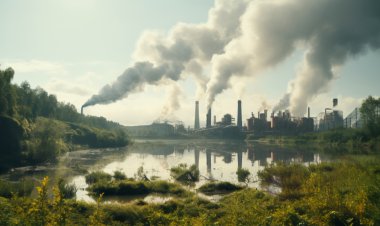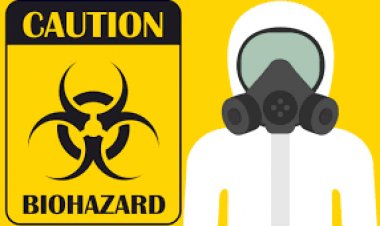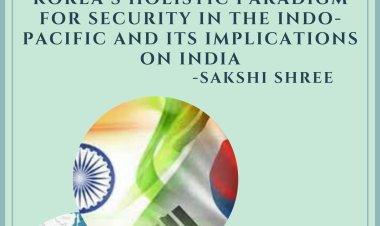Wetlands: Threats and Opportunities for Food Security and National Stability
This article discusses the wetlands and their role in nature. It also examines the connection between wetlands, agriculture, and food security in the context of promoting sustainability.
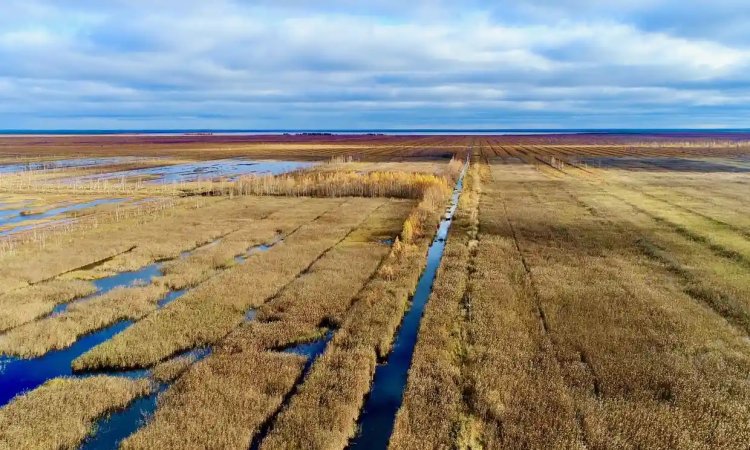
Explainer
By Sakshi Shree
As per the Ramsar Convention, Wetlands are defined as “areas of marsh, fen, peatland or water, whether natural or artificial, permanent or temporary, with water that is static or flowing, fresh, brackish or salt, including areas of marine water the depth of which at low tide does not exceed six meters.”
Wetlands offer various benefits but can also present challenges regarding food security and national stability. Wetland ecosystems are often referred to as the "biological supermarkets" of the world due to their high productivity and biodiversity.
The Vital Role of Wetlands in Nature
Wetlands are biologically diverse and ecologically important ecosystems that contribute to global water, nitrogen, and sulphur cycles. They hold up to 30% of terrestrial carbon despite covering only around 3% of the land surface, helping to mitigate climate change and acting as natural water purifiers by processing organic waste and reducing nutrients. Wetlands play a crucial role in the hydrologic cycle, regulating water storage, release, and replenishment of groundwater. They also stabilize shorelines, protect against erosion, and maintain water supply by sustaining stream flow during dry periods. However, agriculture is destroying wetlands, including several Wetlands of International Importance. In locations where data are available, the size of natural wetlands has shrunk by 35% since 1970. Let's examine the connection between wetlands, agriculture, and food security in the context of promoting sustainability.
Wetlands and Food Security
By ensuring steady agricultural output and addressing seasonal food shortages, wetlands can be vital in achieving food security by attracting diverse pollinator species and sustaining agricultural productivity through crop pollination. Wetland-associated bees, for example, enhance crop pollination, leading to higher yields and better fruit quality.
The conservation and sustainable use of wetlands align with the principles and objectives of Agenda 21 and contribute to multiple Sustainable Development Goals (SDGs) such as Zero Hunger, Clean Water and Sanitation, Climate Action, and Life on Land.
The Ramsar Convention's fourth Strategic Plan (2016-2024) outlines four goals and 19 targets that directly contribute to achieving the SDGs and the Aichi Targets, emphasizing the importance of integration and synergies to enhance their combined impact.
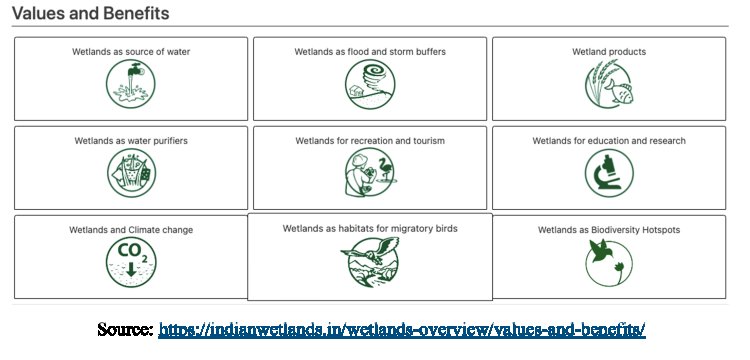
Source: https://indianwetlands.in/wetlands-overview/values-and-benefits/
Wetlands as Opportunities for Food Security
Conversely, wetlands can serve as valuable resources for enhancing food security. These ecosystems, offer sustainable harvests of fish, shellfish, and other aquatic species, thereby meeting protein-rich food demand and supporting responsible fishing practices.
Furthermore, wetlands play a crucial role in regulating water resources, absorbing excess water during heavy rainfall, and preventing flooding in adjacent areas. By implementing appropriate water management strategies, wetlands can contribute to sustainable agricultural practices and enhance food production in the long term.
The Mekong Delta in Vietnam relies on its vast wetlands for rice cultivation, but challenges such as saltwater intrusion and reduced sediment flow pose threats to agricultural productivity. In the Everglades of the United States, wetlands act as natural filters and water sources for agriculture, but urban development and water diversion projects have disrupted the region's hydrology. The Niger River floodplains in West Africa support flood recession farming, but climate change and unsustainable practices endanger wetlands and food security.
Collaborative efforts involving governments, NGOs, and communities are essential for implementing sustainable land and water management practices to secure the long-term viability of wetland-based agriculture and ensure food security in these regions.
Wetlands' Relevance to India's food security
- Wetlands in India play a crucial role in ensuring food security by supporting biodiversity, fisheries, agriculture, climate resilience, and livelihoods. They contribute to approximately 25% of India's fish production, with estuarine and mangrove wetlands serving as breeding grounds for commercially valuable fish species. Preserving wetland habitats like Chilika Lake in Odisha supports the marine ecosystem and sustains the livelihoods of coastal communities. Wetlands also act as natural reservoirs, storing and releasing water gradually, ensuring availability for agriculture during dry periods. Regions like Kuttanad in Kerala rely on wetland agriculture, such as paddy cultivation, for food production. Additionally, wetlands enhance soil fertility through nutrient cycling and sediment retention, benefitting nearby agricultural lands like Hokersar wetlands in Jammu and Kashmir. They provide climate resilience by acting as buffers against floods and storms, protecting agricultural areas. The Pulicat Lake in Andhra Pradesh and Tamil Nadu serves as a natural flood control system. Moreover, wetlands support the livelihoods of rural communities by offering employment, income, and food resources. The Loktak Lake in Manipur sustains fishing communities and their traditional way of life. Preserving and managing wetlands is crucial for ensuring food security, protecting ecosystems, and fostering sustainable rural development in India.
Threats to Food Security
Despite their ecological significance, wetlands can pose challenges to food production and security.
- Wetland degradation and loss: Extensive wetlands limit arable land availability, impede crop growth, and increase food scarcity due to waterlogged conditions, reduced yields, and vulnerability to flooding.
- Wetland-associated diseases: Wetlands pose health risks and threaten food security through the transmission of waterborne, mosquito-borne, and zoonotic diseases, affecting human well-being and agricultural activities.
- Climate change and wetland vulnerability: Climate change threatens wetlands, affecting food production through sea-level rise, extreme weather events, and disrupted irrigation, emphasizing the need for wetland protection, sustainable water management, and climate-resilient agriculture.
National Stability and Wetlands
Wetlands can impact national stability, as conflicts arise over land use and resources allocation. Degradation and destruction of wetlands displace populations and contribute to social instability. However, adopting sustainable approaches and strategies like integrated land-use planning, ecosystem-based management, and community engagement can transform conflicts into opportunities for cooperation, economic growth, and social equity. Preserving wetland ecosystems promotes stability, resilience, and livelihood security.
Conservation of Wetlands in India
Wetlands in India hold immense ecological and socio-economic significance,
leading to the implementation of conventions and amendments to protect and conserve them.
Ramsar sites désignation: India's designation of 75 wetlands as Ramsar sites under the International Ramsar Convention highlights their international importance and the need for conservation. For example, the Keoladeo National Park (Bharatpur Bird Sanctuary) in Rajasthan, a Ramsar site, receives global recognition and support for its diverse bird population and conservation efforts.
Wetland Rules and Guidelines: The Wetlands (Conservation and Management) Rules, 2017 provide a legal framework for wetland conservation in India for identifying, protecting, and managing wetlands. However, the implementation and enforcement of these rules across different states have been inconsistent.
Example: The East Kolkata Wetlands in West Bengal, designated as a Ramsar site, is protected and managed under these rules, and showcases effective wastewater treatment and conservation initiatives.
Integrated wetland management approaches aim to balance conservation with sustainable use and livelihoods as seen in the Vembanad-Kol Wetland in Kerala where government agencies, local communities, and NGOs collaborate to address pollution and sustainable resource use.
The recognition of forested wetlands as "forests" under the Indian Forest Act of 1927 provides legal protection, safeguarding them from encroachment and degradation. Awareness campaigns and capacity-building initiatives, such as the Save Loktak Campaign in Manipur, engage stakeholders in wetland conservation activities. India also collaborates with international organizations, as seen in the India-UNDP project in Tamil Nadu, which promotes the conservation and sustainable management of coastal wetlands through community-based initiatives and capacity-building.
Status of Wetlands in India
Wetlands are the most threatened ecosystem, with approximately 87 percent of natural wetlands lost since the 1700s. Alarmingly, wetlands are disappearing at a rate three times faster than forests, as highlighted by the Global Wetlands Outlook – 2018.
According to the India State of Environment Report (2019), India has lost around 40% of its wetlands in the last century, with Mumbai experiencing the highest loss at 71%. Construction and pollution-driven eutrophication are the primary causes of wetland degradation in cities like Ahmedabad, Bengaluru, Pune, and Delhi-National Capital Region.
The above reports reflect the degradation of wetlands in India at a faster pace. The reasons for the depletion are accounted for below:
- Urbanization and infrastructure development: Rapid urbanization in major Indian cities has led to the conversion of over 50% of wetlands into residential, commercial, and industrial areas posing a significant threat to these ecosystems. The loss of wetlands due to urban expansion highlights the urgent need for conservation efforts and sustainable land use planning to protect these valuable habitats.
- Agricultural expansion: The conversion of wetlands for agricultural purposes, particularly for rice cultivation, has contributed to their degradation. The Food and Agriculture Organization (FAO) estimates that around 35% of the world's irrigated rice area is located in wetlands, leading to the drainage and alteration of these ecosystems.
- Industrial pollution: Industrial activities pollute wetlands, particularly the Ganges River basin, with untreated or inadequately treated effluents, causing water contamination and harm to aquatic life. Efforts to address industrial pollution are crucial for the preservation of wetland ecosystems.
- Encroachment and land-use changes: Unauthorised encroachments, illegal sand mining, and land-use changes pose significant threats to wetlands. Such activities disrupt wetland ecosystems, alter hydrological patterns, and reduce the size and functionality of wetland habitats.
- Inadequate conservation measures: Weak enforcement of regulations and inadequate implementation of conservation measures contribute to wetland degradation. Despite existing laws and policies, such as the Wetlands (Conservation and Management) Rules, 2017, the lack of monitoring, governance, and effective restoration efforts hampers the protection of wetland ecosystems.
Conclusion
Wetlands are a double-edged sword, presenting both threats and opportunities for food security and natural stability. The key lies in adopting a balanced and holistic approach that recognizes the ecological significance of wetlands while addressing the challenges they pose. By promoting responsible resource management, investing in sustainable agriculture, and fostering cooperation among stakeholders, wetlands can be harnessed as valuable assets for ensuring food security, mitigating climate change and promoting natural stability in the face of growing environmental challenges. As we continue to face challenges like industrial pollution and food insecurity, the role of these ecosystems becomes even more critical. Effective implementation of wetland conservation policies, increased public awareness, and community participation are vital to address challenges of pollution, habitat loss and unsustainable resource use and ensure the long-term preservation of wetlands.
Disclaimer: This paper is the author's individual scholastic contribution and does not necessarily reflect the organization's viewpoint.
Sakshi Shree is a distinguished geopolitical researcher, pursuing her final year of post-graduation in Political Science at the University of Delhi. With a focus on security studies, global environment, international relations, and geopolitics, she has garnered acclaim as a Policy Officer at YOUNGO and a Research Intern at Usanas Foundation. Reach her on Twitter @shree_sakshI for insightful updates on her ongoing contributions to the field.

